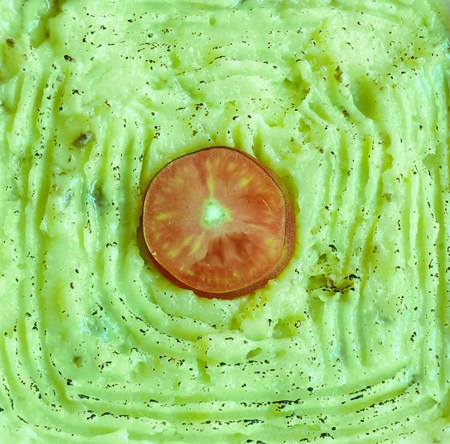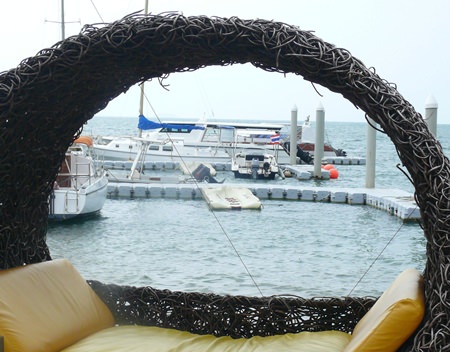“You Press the Button, We Do the Rest” was an advertising slogan coined by George Eastman, the founder of Kodak in 1888. He was the rightful father of popular photography, having brought it to the masses. However, the images were not of a professional standard. That came much later.
There are many ways to become a ‘good’ photographer. In Europe there are professional photographers that will let you work for a pittance and you pick up the rudiments of professional photography by watching and assisting. The drawback is the fact that you get paid very little and you will starve out on your own as a professional.
 A new way to look at food.
A new way to look at food.
There are photography schools you can study with, sending images via email for a tutor to comment on your photograph and what you should do to improve it. This does work for some people, but you need a lot of dedication. You also get time limits placed on each segment of the course. Lots and lots of dedication!
However, there is another way – read books on the subject. This you can do at your own pace, but you do have to become critical of your own work. “You Press the Button, We Do the Rest” was OK for 1888, but not in 2015.
There is a misconception that with the advent of digital photography and applications like Photoshop, anything relating to film does not matter any more. Let’s get rid of that one first – let me tell you that everything related to taking photographs is just the same today as it was pre-digital. The only real difference is that you get instant results with digital cameras. The rest is just the same. Even photo-manipulation was done, and before Mr. Photoshop!
One book that I found invaluable in the early 80’s was written by professional photographer Michael Busselle, a man who had been through the learning process in his pursuit of a career in photography consisting mainly of assistant positions with various London photography studios, culminating in the opening of his own studio in Covent Garden in the early 1960s. He then began to write books on photography and one of those was The Photographer’s Weekend Book (ISBN 0-86134-033-7, Artists House, 1982).
The concept was to make photography a source of enjoyment for the amateur photographer and a “leisure-time pursuit that can stimulate, infuriate, be totally absorbing, or while away an odd hour.”
 A frame within a frame.
A frame within a frame.
Busselle shows how to do all that by giving room for 101 projects for the new photographer to try. These projects range from simple easy ones called Camera Effects like focusing effects, using mirrors, colored lights and even UV light. Later in the book he goes into a Subject Idea file including City lights, food, animal pictures, the urban landscape, markets and street life and a children’s playground.
The next section is called Style and Approach with projects for bad weather, romantic glamor, frames within frames, silhouettes, photographic patterns, high key photographs, low key photographs, bold color, shooting contre jour, wide angle, telephoto, and more with the final section dealing with Special Assignments which includes dramatic skies, abstract nudes, sunsets through to such things as physiograms and photographs for décor.
Now, why I like this book of Busselle’s is that he just doesn’t mention a technique or project, but he illustrates it with several photos as well as describing what and how with each section or project. He shows how a still life bench should be and how to use it with the lighting available.
By describing what he does and showing the results he gets means that this is a perfect learning tool for the interested amateur.
So that’s the good news, the bad news is that now being 33 years old, it will be out of print. However, I am sure Amazon dot com could find a copy for you. It is worthwhile searching for.




